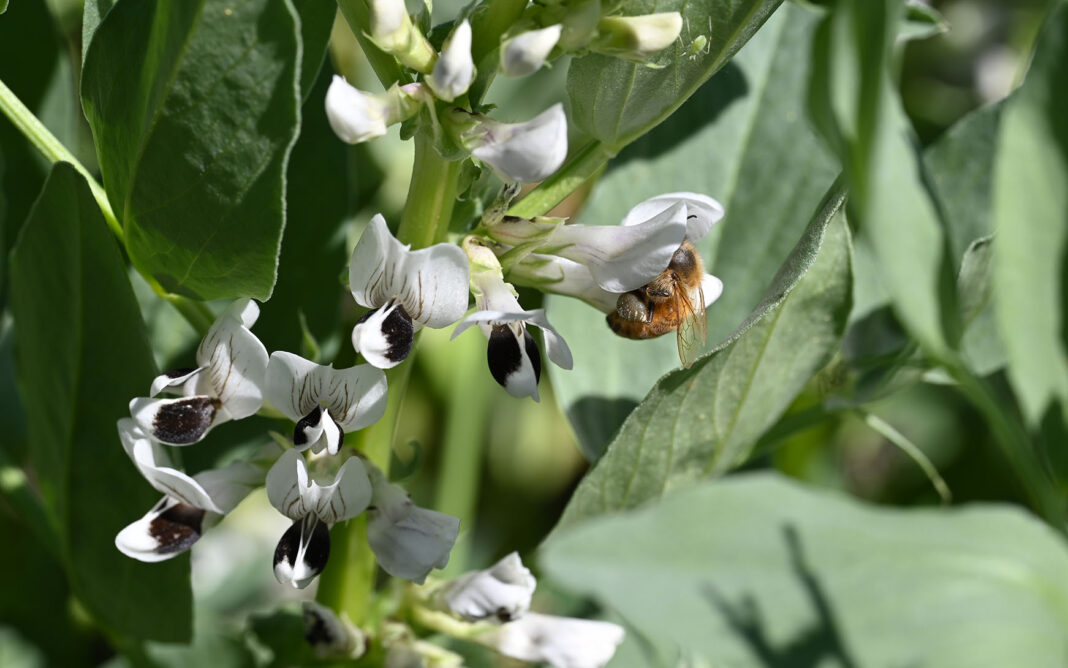Introducing more plant protein into our diets, which are typically rich in meat and milk protein, is a recent trend in food production that could reduce greenhouse gas emissions and loss of biodiversity. A larger dependence on a plant-based diet means an increased reliance on the production of legume protein.
Legumes are not dependent on artificial nitrogen fertilizers, as they access nitrogen through symbiosis with soil bacteria. The ancient, sustainable source of protein, faba bean (Vicia faba L.) has additional advantages, including high yield potential and being well suited for cultivation in temperate regions. However, until now, genomic resources have been scarce. This is, in large part, because of the faba bean’s large (13 Gb) size.
Faba bean’s enormous genome is four times that of humans and 30 times that of rice. Indeed, the biggest of the genome’s six chromosomes holds the equivalent of an entire human genome. Because of that, it has been impossible to read as a whole, hindering efforts by scientists and breeders to find genes that would make it easier for farmers to grow and for industry to process into delicious foods.
Recently, an international consortium succeeded in decoding the giant faba bean genome. The researchers report a “high-quality chromosome-scale assembly of the faba bean genome and show that it has expanded to a massive 13 Gb in size through an imbalance between the rates of amplification and elimination of retrotransposons and satellite repeats.”
This work is published in Nature in the paper, “The giant diploid faba genome unlocks variation in a global protein crop.”
”Decoding the gigantic faba bean genome is a major milestone,” noted Stig Uggerhøj Andersen, PhD, professor at Aarhus University in Denmark. “We can now finally begin to understand important traits such as drought tolerance, and protein content and quality, so that—together with plant breeders—we can improve them in an effective way and make faba bean a much more attractive crop.”

Now, an international team of researchers has read and assembled the whole genome of faba bean and identified a key gene for seed size—an important food characteristic. They sequenced its genome with PacBio HiFi long reads to 20-fold coverage and assembled 11.9 Gb of sequence, more than half of which was represented by contigs longer than 2.7 Mb.
“An improved faba bean will contribute to a green bioeconomy by promoting sustainable food systems. To meet the growing demand for protein while preserving biodiversity and reducing agricultural greenhouse gas emissions, consumption of animal-based foods will have to decrease, while the proportion of plant-based food should increase. Faba bean can be a big help in this,” said Alan Schulman, PhD, head of research at the Institute of Biotechnology at the University of Helsinki, Finland.
Food production is responsible for a quarter of the climate-changing greenhouse gas emissions, of which the largest contribution comes from animal-based production. Legume-based plant protein grown for Europe, in Europe, confers many benefits and faba bean is the legume best suited in the Nordic and Baltic countries.
“Faba bean is a highly promising basis for meat alternatives and new vegetarian and vegan foods for northern Europe. It has great potential, but it can only work if farmers want to grow it and people want to eat it,” Schulman said.
The faba bean, however, suffers from several challenges. Drought and disease resistances are needed; these problems are increasing due to climate change and lead to unstable yields on farms. The “beany” flavor should be reduced or eliminated, and processing and nutritional quality improved.
“The lack of a genome has hindered the development of the tools for breeders that would allow rapid tackling of these problems. Faba bean has been studied by only a small community and has seen little investment so far. Things are changing now. The new genome is enabling the research team to address nutritional and processing quality, flavor and the sustainability traits needed for the future climate,” Schulman added.







